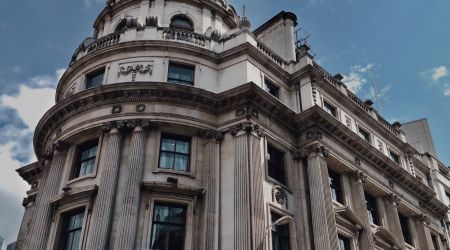Inflation explained

Inflation is not that complex to understand, it's just one of those subjects that don't really interest that many people unless they have to be interested in it. Most understand the basic principle and how it affects them. So this guide is simply a quick review of it and adds some additional information that some may not be aware of.
The basics of Inflation
Let's just jump right in with the high-level effect inflation has on you and me as consumers. The Government has a target for inflation. That is the aim for inflation for each year is 2%. What does that mean?
Shopping
Suppose you spend £200 each week on food in 2021. For simplicity you put exactly the same 30 items in your shopping basket every week, never changing it throughout the year.
As we enter 2022 inflation causes prices to rise by the expected target of 2%. Essentially what that means is your shopping will increase by 2%.
So in order to keep buying that exact same 30 items each week in 2022, it will cost you £204. An extra £4. So what do you do? Well, you have two choices. Either spend an extra £4 each week to buy the same items or you remove something from the basket so you don't have to spend another £4.
Simple enough right? £4 is not bad, but that is not all that impacts what you buy.
Add everything else
Shopping is one part of living. But then you need to consider everything else that will be affected by inflation. Almost every part of life that has a cost is impacted, for example:
- Clothes
- Travel
- Eating out
- Technology
- Insurance
- Leisure activities
And so much more. When you add up everything you spend each month it really adds up. That £4 increase in shopping might not appear much on its own but what if you spend £12,000 each year on things that are impacted by inflation?
Spending £12,000 in 2021 will mean having to spend £12,240 in 2020 to get exactly the same as you did in 2021.
Income
Increases in one year of £240 may be manageable but it happens every year. At some point, many find themselves in the position that the only way to ensure they can keep purchasing the same items each year, their income needs to also increase. If their income does not increase then it leads to the inevitable of having to cut back and not buy as much.
To be clear, when I refer to spending £12,000 per year, I am not talking about unnecessary spending, just the minimum that needs to be paid for in order for a family to survive.
Everyone in employment will want their employer to give them a pay rise each year of at least 2% to equal inflation. That way they can continue to buy everything they need. Those that are not fortunate enough to get a pay rise may then have to cut back a little. Everyone is different.
Everything changed in 2022
For the last decade or so inflation has remained at or below 2%. As we emerged from COVID and then the invasion of Ukraine by Russia inflation started rising. Today inflation is running at 9.9%, far in excess of the 2% target.
So the £12,000 you spent in the last 12 months is going to cost you £13,200 this coming year. A £1,200 increase. That does not mean every single item you buy has increased in price.
As everyone knows the issue with Gas has resulted in prices rocketing to prices never seen before. We are all impacted. My bill for Electricity and Gas was £120 each month. From Feb 2022 it increased to £185. That is £780 more this year than last. Energy costs are the most significant contributor to the rate of inflation at the moment.
My energy costs alone have increased by 54% in a single year. Normally I would be looking for a deal around the same as I paid before.
The domino effect
When we have a year like 2022 it affects everyone. So many regardless of whether earning £20,000 or £50,000 are impacted. The result is that everyone needs more money to cover the increasing costs.
Pubs are suggesting a pint will end up costing £10, the cost of fish means fish and chips could rise to £20. We are seeing some ridiculous pricing of items like tubs of butter reaching £8.
The media is reporting strike action almost every day as workers try to get higher pay to cope with inflation. On Monday this week trains were cancelled due to strike action. Rail workers will likely get an increase. What will that mean? Higher rail fares lead to higher costs for me which means my costs go up again.
There are so many examples of the above I could be here all night writing them out but you get the idea. As everyone in different jobs fights for higher pay it causes someone else's outgoing to rise and even if they did get a decent pay rise last year, they will be falling behind again before long, so they will want more at the next review date.
When will it stop? Nobody is talking about an end date. All that is being talked about at present is how much worse it is going to get.
How is inflation calculated?
There are three indexes used to calculate inflation in the UK, they are shown below. They all use more or less the same methodology to get to a published figure. The difference is in what product prices each of them monitors.
Indexes
- CPI - Consumer Price Index - Currently 9.9%
- CPIH - Consumer Price Index Including Housing - Currently 8.6%
- RPI - Retail Price Index - Currently 12.3%
CPI is the most relied upon and is the method used across all EU states to consistently measure inflation. This is what you will see quoted in the media when referring to the rate of inflation. CPI has been around since 1986, used as the official measure since 2011. This measurement takes no account of housing costs.
CPIH is the same as CPI but also includes housing costs which CPI on its own does not. Officially CPIH is not used by the government at present. It was suspended in 2014 as there were issues around the quality of housing costs. It is still published though. CPIH does not include mortgage payments, what it does is consider "rental equivalence". Rather than try to factor in local authority rent, private rent and mortgages, it attempts to use a more general rental figure anyone would be expected to pay for a property each month regardless of who it is rented from or whether a mortgage is used.
RPI was the original measure of inflation first introduced in 1947. It is still published but was replaced as the official measure in 2011 with CPI. RPI includes mortgage interest payments which mean it is heavily influenced by house prices and interest rates.
Changes by 2030
Too many indexes that report different things and especially where there are considered data quality issues between them is not a good position to be in.
The government announced in 2020 that RPI will be reformed. This cannot happen earlier than 2030. The reason for this is that index-linked government gilts use RPI, changing the way RPI works before 2030 will have too much of an impact on gilts, some of which have maturing dates up to 2030.
Essentially RPI will change to use the method seen in CPIH. The effects are beyond the scope of this guide. In any event, the changes are still 7 years away.
A basket of goods
You may have come across this phrase before. Inflation in its simplest form is a measure of how the price of goods and services change and the effect it has on household finances.
The Office of National Statistics (ONS) maintains a list of items used to track price changes. You can see what is tracked here. This is where the term "basket of goods" comes from.
Put all of those items from the list in a basket, scan the price on one date then do the same on the second date and establish the difference in the price. That is the rate of inflation.
Refer back to my initial example of a basket of weekly shopping that has 30 items. It cost £200 in 2021 and then £204 in 2022, the difference is 2%. The same principle is used by the ONS but the basket includes a lot more goods and services.
In 2022 the basket of goods used to measure inflation had 733 items in it. Each year this changes, sometimes items are removed or added depending on the way households are spending. For example, due to COVID anti-bacterial wipes were added to the basket because of the extra cleaning everyone was doing. Doughnuts were removed because sales had fallen significantly, likely due to WFH.
Ultimately the basket of goods is very dynamic, constantly changing depending on what customers are buying.
Inflation in many forms
Inflation can be referred to in different ways depending on how it is trending. There are five potential terms you may see being referred to.
Hyperinflation
Sometimes inflation goes so high it needs an appropriate term to describe it. Hyperinflation! It does not happen that often but it can. One of the most recent examples was in 2018 in Venezuela. Inflation rose so high that a cup of coffee went up by around 750%. Inflation for a very short period of time was 440,000%.
High Inflation
This is where we are right now, inflation is high at 9.9% vs the target of 2%. The result is that we can't buy as much today as we could in the same period last year using the same amount of money. Living standards will fall without income rising at the same rate.
Low Inflation
This is where we were for many years prior to 2022. Inflation each year was 2% or thereabouts. Prices rise slowly which is good for consumers, there is less of a chance prices will rise faster than income. But there is a caveat to this. If inflation is too low it could be a sign that consumer demand is going down, fewer goods and services are being purchased and that impacts businesses that will see less income and may even end up with higher unemployment.
Stagflation
Here we see inflation going up whilst economic growth is doing down. It's the perfect storm of nobody wins and can lead to the Bank of England increasing interest rates.
Deflation
Now we will see prices falling vs rising as they are in 2022. This is due to the low demand for goods and services. Usually, as a result, that consumers feel prices are too high so delay spending to wait on prices to fall further. Not something that happens in the UK or other developed economies.
Summary
So there we are, a whirlwind tour of inflation touching on key elements but not getting too technical or boring hopefully. It is a complex area, no doubt about it.
Lee Wisener, CeMAP, CeRER, CeFAP
Having worked in the mortgage industry for over 20 years I have always wanted to build a website dedicated to the subject. Also being a geek when it comes to the internet all I needed was time and I could both build the site from scratch and fill it with content. This is it!

<< Newer Post
Freehold or Leasehold what do they mean?Older Post >>
Home Energy Performance Explained